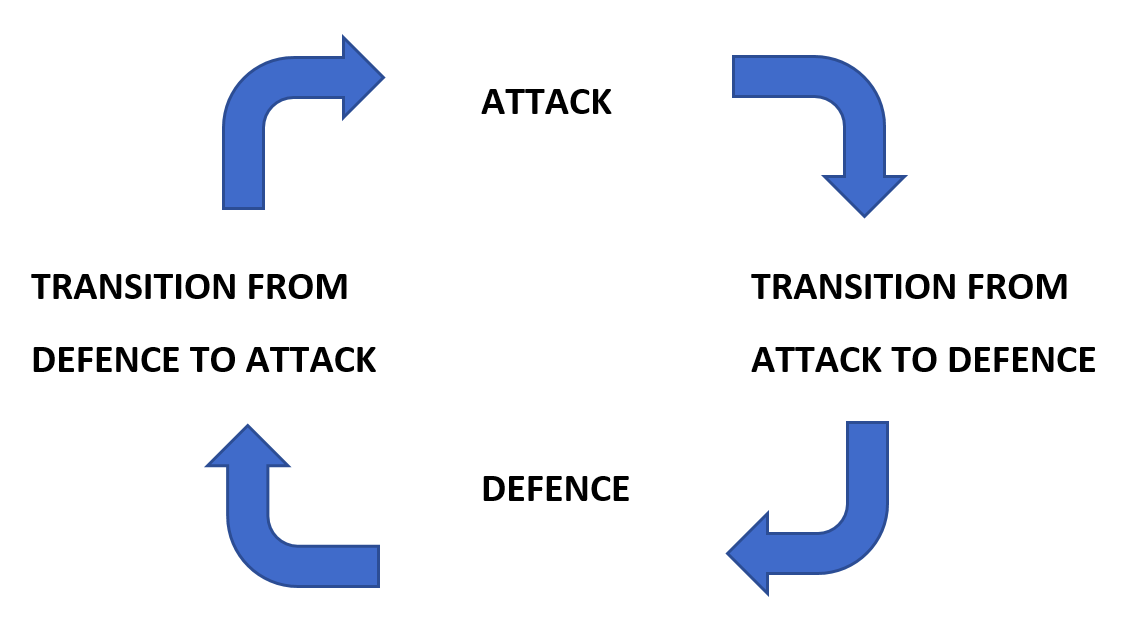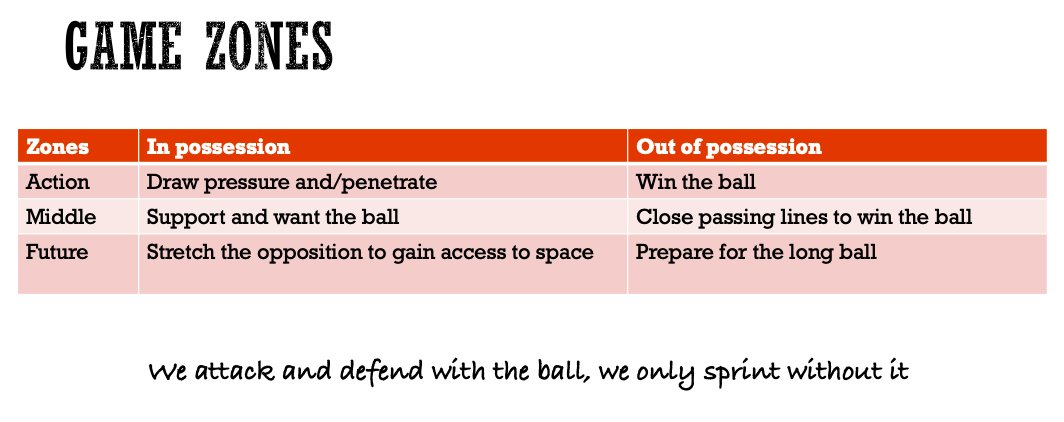A philosophical question for coaches and thinkers out there. Why is it we insist on seeing football as a game of 4 "phases"?
Which implications does this have for the game we teach?
Is this a "true" model, or just one we choose to apply for simplicity?
Which implications does this have for the game we teach?
Is this a "true" model, or just one we choose to apply for simplicity?
Issues with this paradigm:
- What& #39;s really the difference between an attack and a transition to attack? When does the transition end?
- The model pretends that there are no defensive interests in possession or vice versa.
- Can each phase be isolated and trained on it& #39;s own?
- What& #39;s really the difference between an attack and a transition to attack? When does the transition end?
- The model pretends that there are no defensive interests in possession or vice versa.
- Can each phase be isolated and trained on it& #39;s own?
This model is inspired by the work of Verheijen. Is this a more logical approach, with all "phases" exists in this continuum? This also highlights the team intentions of "build up" & "score" vs "disturb build up" & "deny scoring". Each team will execute these differently.
Alternatively, some would argue defense and attack does not exist in separation but are both always present. The game evolves around the ball, and within a action, middle and future zone. Something romantic like this:
Does it matter how we see the game as coaches? Yes, because this influence what we see when we watch football being played and our interpretation. This again shapes the practices we design and our interventions.
Of equal interest. This shapes how we plan weeks, months and other periods of training. Is defense or attack the starting point - which shapes the other? Or do we not separate them and speak instead of in- and out of possession?

 Read on Twitter
Read on Twitter





